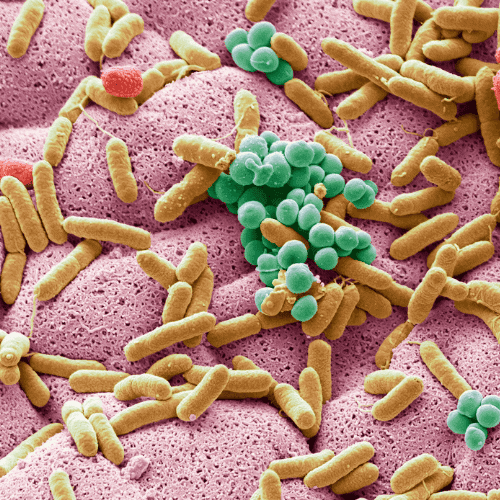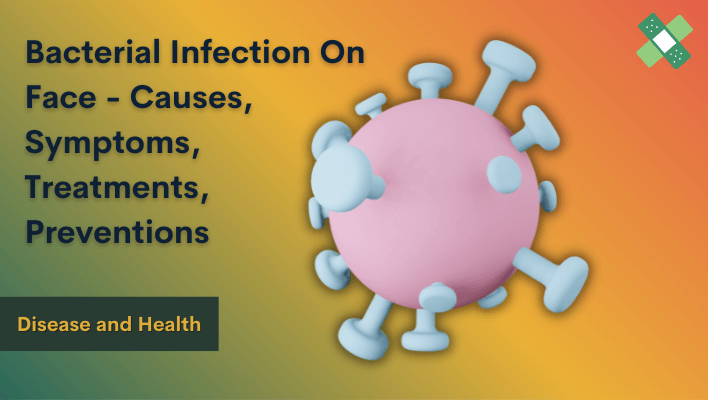A bacterial infection can happen anywhere in your body. But they’re especially common bacterial infection on face because that’s where you have the most oil glands. That oil creates a friendly environment for bacteria. When these bacteria get into your pores, they can cause an infection. The most common type of bacteria that causes infections is Propionibacterium acnes.
Bacterial infections are a common occurrence on the face. They can be caused by a number of different things, including contact with contaminated surfaces, poor hygiene, and exposure to someone who is already infected. Symptoms of a bacterial infection on the face include redness, swelling, and pus-filled bumps. If left untreated, these infections can lead to serious health complications.
There are a few simple steps that you can take to prevent bacterial infections on your face. These include washing your hands regularly, avoiding touching your face with dirty hands, and keeping your skin clean and moisturized.
Bacterial infections on the face are unsightly and can also be painful and cause long-term damage. Many different types of bacteria can infect the face, and they can enter the body through cuts, scrapes, or even pores in the skin.
Let’s get started with causes, symptoms, treatments and preventions of bacterial skin infection on face.
Causes of Bacterial Infection on Face
Bacterial infections on the face are relatively common and can occur in anyone at any age. The most common cause of a bacterial infection on the face is acne. However, other causes include dermatitis, rosacea, and folliculitis. Acne is caused by a build-up of sebum, an oily substance produced by the skin. This build-up can block pores and allow bacteria to grow.
Dermatitis is an inflammation of the skin that an allergy or irritation can cause. Rosacea is a chronic condition that causes redness and swelling on the face. Folliculitis is an inflammation of the hair follicles caused by shaving or wearing tight clothing. Treatment for a bacterial infection on the face will vary depending on the cause.

Bacteria can enter the body through cuts, abrasions, or open wounds. These bacteria can cause infections in the skin, hair follicles, or sweat glands. Bacterial infections of the skin are usually not serious and can be treated with antibiotics. However, if the infection is left untreated, it can spread to the bloodstream and cause a more serious infection.
Symptoms of Bacterial Infection on Face
There are many different types of bacterial infections that can affect the face. The most common symptoms of a bacterial infection on the face include redness, swelling, and pain. Other symptoms may include pus or drainage from the affected area, crusted lesions, and fever. If you think you may have a bacterial infection on your face, it is important to see a doctor as soon as possible for proper diagnosis and treatment.
Treatment of Bacterial Infection on Face
Bacterial infections on the face are a common occurrence. There are many different types of bacteria that can cause an infection on the face. Staphylococcus aureus is the most common type of bacteria that causes an infection on the face. This type of bacteria is usually found on the skin. Other types of bacteria that can cause an infection on the face include Streptococcus, Pseudomonas, and Enterobacter.
Treatment for a bacterial infection on the face usually includes antibiotics. The most common antibiotic used to treat a bacterial infection on the face is clindamycin. This antibiotic is usually taken by mouth for seven to ten days.
Another antibiotic that can be used to treat a bacterial infection on the face is erythromycin. This antibiotic is usually applied to the skin as a cream or gel for seven to ten days. In some cases, surgery may be necessary to remove the infected tissue.
Prevention of Bacterial Infection on Face
Bacterial infections on the face are a common occurrence, especially in children. However, there are ways to prevent these infections from happening in the first place.
One of the best ways to prevent bacterial infection on the face is to practice good hygiene. It means washing the face regularly with soap and water and avoiding touching the face with dirty hands. It’s also important to avoid sharing towels, makeup, or other personal items with others.
If a bacterial infection does occur on the face, it’s important to treat it immediately. It usually involves using an antibiotic cream or ointment. In serious cases, oral antibiotics may be necessary. With proper treatment, most bacterial infections on the face will clear up within a week or two.
Read more about 7 Types of Bacterial Skin Rash and their treatments.
Conclusion – Bacterial Skin Rash on Face
A bacterial infection on the face is a serious matter that should not be taken lightly. If you think you have a bacterial infection on your face, it is important to see a doctor right away. Early diagnosis and treatment are essential to avoid serious complications. A few different types of bacteria can cause an infection on the face, and each one requires different treatment. With prompt and proper treatment, most bacterial infections on the face can be cured without any long-term consequences.
I hope this article about the bacterial infection on face has been helpful to you.
How do I get rid of a bacterial infection on my face?
You can do a few things to get rid of a bacterial infection on your face. First, wash your face with warm water and soap. It will help to remove any dirt and bacteria that may be on your skin. Apply a topical antibiotic ointment or cream to the affected area. Cover the area with a bandage to keep the area clean and protected.
What does a skin bacterial infection look like?
A bacterial skin infection can appear as a red, swollen, and painful area on the skin. It may also have pus or another drainage. The area may be warm to the touch.
Can you get a bacterial infection on your face?
Yes, it is possible to get a bacterial infection on your face. It can happen if you have a cut or scrape on your face that gets infected with bacteria. You may also get a bacterial infection if you have acne or another skin condition.

